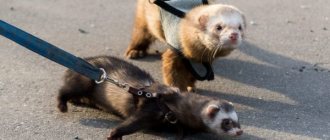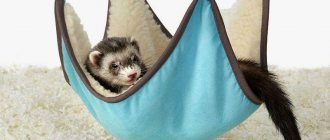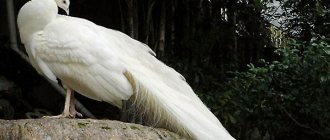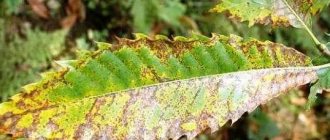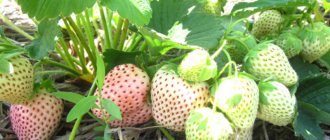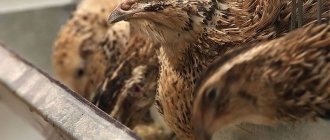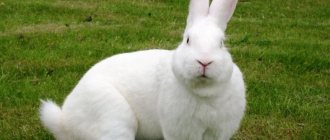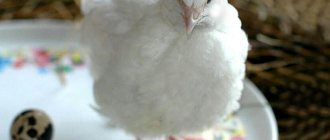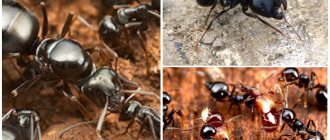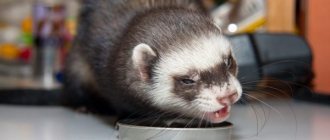A representative of the order of predators is the white ferret, which lives in flat areas. As a cute pet, he has proven himself to be a playful and very active creature that quickly gets used to people. However, we must not forget that the animal has the habits of a predator. If an animal senses a threat looming over its life, it immediately uses its fangs and a liquid with an incredibly foul odor, which is produced by special glands, to defend itself.
Representative of the order of predators - white ferret
Care and maintenance
When favorable conditions are created, a ferret in captivity lives 7-9 years - this is a pretty good period for such a small animal, and for its owner it is another reason to think about whether he is ready to take on all the responsibility for maintaining comfortable living conditions for the animal in the apartment . Don't forget that we are not talking about a hamster that lives for a couple of years and spends most of its time in a cage.
Features of the home
The ferret sleeps 13-15 hours a day, most often during the day. This means that at night all family members will sleep peacefully, and their pet will make every effort to prevent this, wake up its owners and attract them to active games. To prevent him from turning his house upside down, the animal will need a good spacious cage, preferably an enclosure, the minimum dimensions of which should be 1x1x0.7 m.
To prevent your pet from getting bored, you need to hang several hammocks in the cage, in which the ferret will spend all her free time. If you have a large house or a spacious apartment, it is better to build something like a zoo enclosure - in this case, the ferret will have enough space and the need to walk the pet will completely disappear. In such structures it would be useful to hang ladders and ropes.
You should definitely provide a small kennel in your home - usually it is assembled from improvised materials, paying special attention to the safety of the house for the furry ones. Inside, be sure to put bedding made of old, warm and very soft fabrics, for example, wool and terry
It is better to buy feeders and drinkers that are small and durable. It is advisable to use hanging structures, otherwise an active animal can simply turn them over.
Ferrets love squeaking and rustling toys, balls, pieces of fabric, teethers and many other entertainment devices.
As a toilet, you can use the most ordinary tray, like for cats, and use sawdust or pressed mixtures as a filler.
Nutrition
The length and quality of life of a pet directly depends on its nutrition. In their natural habitat, ferrets eat birds, insects and small rodents. At home, it is hardly possible to adhere to such a regime, so breeders switch their pets to ready-made food.
There are 4 main types of food - economy, middle class, as well as premium and professional mixtures. The first two categories are among the most budget-friendly - it is not advisable to use them for ferrets; it is better to purchase more expensive products that contain all the necessary vitamins, micro- and macroelements. They also contain less fat, making them much better absorbed by the stomachs of furry pets. Preference should be given to dry mixtures - firstly, they are odorless, and secondly, they contribute to high-quality cleaning of teeth from plaque and tartar.
If desired, you can feed the animals natural food; in this case, the majority of the diet should be meat; it is chopped into small pieces or ground in a meat grinder. This food is given to ferrets twice a day, and approximately once every 7-10 days this mash is supplemented with sea fish and chicken eggs. By the way, such feeding is no cheaper than buying ready-made formulas.
Hygiene
There is no need to bathe your ferret too often - a couple of times a year is enough, and the shampoos should be special and harmless to animals. Everyday cleaning of fur is carried out using wipes and sprays - these can be purchased at any pet store.
Don't forget about the pet toilet. The fact is that the urine of these pets contains quite a lot of ammonia, so it has an unpleasant, pungent odor. To prevent it from spreading throughout the house, the litter box should be updated daily.
The animal requires special care during the molting period. Usually it occurs in March - then the pet sheds its long hair and is left with shortened, thinner hairs. The second molt occurs in October-early November - at this moment the hamster prepares for wintering and forms a thick coat with dense undercoat. Shortly before the start of molting, the animal usually begins to itch very much; the itching often bothers the animal even during sleep. In such conditions, he will not be able to fall asleep until he gets rid of the unpleasant sensations.
This period usually lasts no more than 1.5-2 weeks, but causes a lot of inconvenience to both the pets themselves and their owners. Breeders get very scared when they notice small blue spots on their pets - but don’t let this scare anyone, this is how ferrets “paves the way” for new fur. During this period, the animal needs vitamins, then changing its coat will be much easier for the pet.
Character of the breed
Since the ancestors of ferrets are wild forest predators, this leaves a certain imprint on the domestic breed.
However, many scientists worked on breeding this species, so the albino ferret gets along with humans and cannot survive in natural conditions. The animal combines many character traits that require constant monitoring:
- Curiosity. The body shape of white ferrets allows them to get into many forbidden corners of the house, so you need to keep an eye on the animal. The pet always carefully explores its territory and can make a mess if you don’t supervise it.
- Active games. Ferrets willingly play with humans and other ferrets, but you should be careful: sometimes an overexcited animal can show hunting instincts towards the owner. The pet may bite or scratch during play. In this case, the ferret should be returned to the cage for a while.
- Love of attention. Similar behavior can be observed in dogs: ferrets require constant attention. If you don't show interest in your pet for too long, it starts to misbehave. The animal can follow on the heels of a person in the hope of affection or play.
Feeding
The question of what a domestic ferret eats is extremely important. The condition of the animal’s coat and its overall health depend on this. The diet can be based on feeding natural food or using dry food. It is quite difficult to create a balanced menu of natural products, taking into account all the vitamins and other nutrients necessary for the animal. Therefore, if you are an amateur in breeding trochees, then it is better to opt for drying.
You can purchase special food for ferrets at a pet store or feed your pet premium dry food intended for cats. The nutritional needs of these animals are very similar. It is preferable that the product contains poultry meat and is intended for kittens up to one year old or pregnant cats. Additionally, you can give your ferret treats in the form of special “chews” and “crunchies” from the pet store, as well as fruits and vegetables. Do not forget that your pet always has access to fresh water in unlimited quantities. There is no need for vitamins and other food additives when feeding by drying. The food contains all the components necessary for full development.
If you have chosen natural food, then your pet’s daily menu will consist of the so-called “farshekashi”, which is meat and offal, cereals and vegetables minced through a meat grinder.
The mixture should include:
Meat - beef, veal, chicken, turkey, lamb - can be eaten raw, it is very important not to remove cartilage, veins and skin from the meat. By-products – heart, kidneys, chicken giblets, liver. Fish – trout, flounder, herring, horse mackerel, mackerel, cod (grind with head and bones). Cereals – millet, rice, buckwheat, oatmeal. Chicken eggs must be boiled, quail eggs can be given raw. Low-fat cottage cheese. Cheese (only as a treat). Vegetables and fruits - no more than 2% of the total food. Vegetable oil. Fish fat.
Products prohibited for ferrets:
- Citrus.
- Nuts.
- Apples and carrots.
- Onion and garlic.
- Sweet and floury.
- Sausages and smoked products.
- Salty foods.
- Fish – haddock, hake, blue whiting, pollock, pollock.
- All dairy products, except cottage cheese, cheese and goat milk.
- Dog food.
- Economy class cat food.
- Any food from the human table.
Many ferret owners are interested not only in the question of how to feed their ferret correctly, but also how many times a day. The famous expert on these animals, the author of many books about ferrets, Kim Schilling, writes in her works that horis are not dogs or cats in order to eat food strictly on a schedule. He recommends that there is always food in the animal's bowl. As a rule, animals eat about 7 – 10 times a day, but little by little.
On average, an adult female eats up to 200 grams per day. “farshekashi”, male – up to 270 gr. The minimum portion for sexually mature individuals is 160 g. A pregnant female or breastfeeding female needs a portion of food from 200 to 350 grams.
For the harmonious development of a domestic ferret, mineral and vitamin supplements must be regularly added to natural food. This is especially true when feeding puppies, pregnant or lactating females. The exact dosage of beneficial supplements should be checked with a veterinarian.
Many owners of trochees also practice a third method of feeding - giving their pets whole carcasses of chickens and mice, cockroaches and mealworms. Thus, they create a kind of illusion of feeding, close to nutrition in wildlife.
Additional recommendations
Now it’s time for additional points regarding the description of white domestic albino ferrets, as well as the features of their maintenance. Not all things can be squeezed into a certain classification, and yet such little things can be important for someone who wants to have these little predators.
And it starts with the unpleasant musky smell that often scares people away from the prospect of keeping a ferret at home. While the animals are small, they are very weak, but upon reaching puberty, the amber significantly intensifies. However, it disappears completely if your pet is spayed or neutered. A correctly performed procedure will not affect his health in any way.
Now about training. How to carry it out has already been said. But there was no answer to the question “why”. The fact is that ferrets are extremely active animals and need frequent walks.
Despite their small size (and sometimes because of it), they can run off in search of something that interests them and not find their way back, so their obedience is simply vital
Finally, regarding their health. Even before buying a baby ferret, you should visit the nearest veterinary clinics and stores to make sure that the appropriate specialists are available nearby. Unfortunately, there are not many people who understand the peculiarities of keeping and health of mustelids, and there is no doubt about it, and qualified help will be required here.
Popular decorative colors
Before we talk about different colors, it is worth talking about the main types of ferrets, describing their appearance and main characteristics. So, there are several of the most common types of ferrets: prairie, forest, black-footed and ferret. Let's look at them separately.
Steppe (light, white)
The steppe ferret is one of the largest representatives of its species; it can reach a length of 56 cm, and its weight sometimes reaches 2 kg. Based on the name, one can guess that animals prefer the steppe, semi-desert places, and fallow lands as their habitat. They are called light due to the color of their fur.
The upper hair is usually black or dark brown, and the dense, thick down, which breaks through the thin hairline, has a rather light shade. On the muzzle there is a characteristic pattern in the form of a black mask. They live alone, but group coexistence is also possible. They feed on gophers, hamsters, snakes, and frogs. Females of this type of ferret are very fertile, they are capable of breeding up to 18 puppies.
Forest (black, dark or regular)
Slightly smaller in size - approximately 35-47 cm, body weight - from 400 g to 1.5 kg. It is mainly black-brown in color, and the legs and tail are almost completely black. There is also a characteristic mask on the muzzle. It feeds on rodents, frogs, birds and their eggs. Compared to the steppe ferret, females of this species do not give birth to many cubs - only about 4-6 puppies.
Blackfoot (American)
The predator is a rather rare species, is on the verge of extinction and is listed in the Red Book. The length reaches approximately 30-40 cm, and the weight of the animal is from 650 g to 1 kg. The color of the fur at the base of the hair is light and dark at the ends; a characteristic black mask on the muzzle is also present. The feeding pattern does not differ significantly from other representatives, the only peculiarity being the prairie dogs, on whose population the survival of the American ferret depends.
Fretka (furo, domestic or African)
It is one of the domesticated species of ferret, although scientists use the term “furo” to designate ferrets that, unlike others, are albinos. A ferret of any species that a person has tamed and placed in his home can be considered a pet. According to the main indicators, this type of ferret resembles a steppe ferret, the body length is also approximately 50 cm, and the weight is from 700 g to 2 kg.
There is another variety - the golden ferret. She was bred by crossing a ferret and a forest ferret. This representative has thick long fur, black outer hair and an orange down, which is why it received its name. It is also worth noting the species called honorik, it appeared by crossing a mink and a ferret.
Despite such a number of species, the different color options of these animals amaze with even greater diversity. Based on the huge number of different colors, they still decided to divide them according to certain criteria. The basis of the classifications began to include such characteristics as:
- coloring, color scheme - what color is the body, nose, eyes, limbs;
- presence of marks, location of spots on the body;
- mask on the face - its color, as well as its presence or absence;
- fur pigmentation: silver, black, sable, chocolate.
In the wild, ferrets can have color options of one color: completely red or completely brown or black. If we are talking about domesticated pets, then there are definitely more color options, here are the most common:
white black-eyed - there is some resemblance to albinos due to a similar white color, but their eyes are black and their nose is pink;
In addition to the types of colors described above, when classifying ferrets by species, the following are also taken into account:
- the presence of spots and their location;
- all kinds of marks.
Numerous family of mustelids
In the scientific classification, the steppe ferret is called Mustela eversmanni. It belongs to the weasel family. That is, distant relatives of the animal are stoats, minks, solongoi, weasels and, in fact, martens. This small carnivorous mammal belongs to the genus of weasels and polecats. The second word of the scientific name of the animal - eversmanni - pays tribute to the Russian zoologist E. A. Eversman (1794-1860), who described this species. The closest relatives of the steppe inhabitant are the forest (Mustela putorius) and black-footed (Mustela nigripes) chori, as well as the ferret (Mustela putorius furo). They can mate with each other and produce viable offspring. Many hybrids have been bred by humans: for example, Honorik, obtained from a union with a mink. Although all species of ferrets have different habitats, they quickly adapt to new conditions. Thus, forest ferrets were brought to New Zealand to combat the growing rat population. As a result, adapted small predators now threaten the island's native fauna.
Description of the animal and its characteristics
Due to its disproportionate legs, which are quite short, the animal is squat. His body is elongated and very flexible. The paws of the animal, despite their small size, are very strong. Thanks to its limbs, the ferret is an excellent jumper and swimmer.
The animal has large claws on its paws, which allow it to deftly climb trees and successfully dig holes.
On average, the length of an adult ferret reaches half a meter, but females are always smaller, about 10 centimeters. The weight of the animal varies from 300 grams to 2 kilograms. It depends on the type of animal.
Its neck is quite long and incredibly flexible. The head is oval, the muzzle is blunt. The calling card of any ferret is its tail, which can reach a length of 18 centimeters.
The ferret is covered with beautiful fur with a thick undercoat. After the end of molting, which usually occurs in the fall, the animal’s fur becomes incredibly beautiful. The coat color, depending on the species, can be sandy tones or completely black. There are also rare albino ferrets, whose fur is boiling white.
Absolutely all individuals (except albinos) always have an intricate pattern on their heads that looks like a mask.
In the tail area there are glands that secrete a secretion with a very pungent unpleasant odor. With the help of this secret, the beast scares away ill-wishers. Zorek has a particularly developed sense of smell, and it is thanks to this sense that they are excellent hunters.
A ferret has 28 to 30 strong teeth in its mouth. Their fangs are especially powerful.
In the wild, a ferret lives for about 3-4 years, at home much longer - about seven years.
How to feed? Recommendations for beginning choreographers
One type of meat should be given at a time. In general, ferrets should not eat dog or cat food. But there are some types of products that are suitable for these animals. When choosing food, you should consult with experienced choreographers.
Particular attention should be paid to minerals. It is necessary to follow a feeding regime so that the animal’s digestive system works well.
In the wild, ferrets are typically active at night. That's why they don't eat well in the morning. Their appetite awakens closer to noon. It is advisable to feed the animal at the same time.
It is important to buy only quality products for your ferret. You should wash your pet's bowl before every meal.
It is worth giving ferrets filtered water, without chlorine.
Health, disease and prevention
Decorative ferrets get sick like other pets. Diseases that are most often diagnosed in ferrets:
- Aleutian mink disease is a virus transmitted from mother to puppy, as well as through feces, saliva and urine, and affects the immune system. Symptoms are severe (diarrhea, lethargy, bleeding from the mouth/nose, anemia, thirst and fever);
- Rabies is an acute viral disease that attacks the nervous system. The pathogen is found in the saliva of an infected animal. Since the disease cannot be treated, vaccination is indicated;
- Influenza is a virus often transmitted by humans. Symptoms: fever, rhinitis, lacrimation, cough, diarrhea, drowsiness and apathy. The animal recovers within 3-14 days;
- Otodectosis – ear mites that enter the ear canal from a sick animal or through objects in contact with it. The ferret's ears become inflamed and itchy, and a black coating forms inside;
- eosinophilic gastroenteritis - affects the gastrointestinal tract. It usually occurs as a result of poor nutrition. The ferret loses a lot of weight and suffers from diarrhea and skin ulcers;
- plague - transmitted by sick animals and leads to death. The virus is also transmitted by people (on clothes/shoes), rodents and birds. High fever, conjunctivitis, rhinitis, redness of the lips/chin and refusal to eat are noted;
- stomach ulcer – appears due to improper feeding and stress. An advanced form of the ulcer threatens gastric bleeding and death of the ferret.
In addition, domestic ferrets often suffer from fleas, which are removed with pet shampoo or anti-flea aerosol.
This is interesting! The ferret must have a veterinary passport containing all routine vaccinations. And they must be done, like all domestic dogs and cats.
It is better to vaccinate in a clinic, since ferrets are often allergic to the drug. At home, you should have a first aid kit and the phone number of a doctor who specializes in treating mustelids.
Ferret colors with names and photos
In the Russian color classification, there are four main types of ferrets, descriptions and photos of which are given below:
Mother of pearl. Ferrets of the pearl group include sable and silver colors. The pigmentation of animal fur is heterogeneous: the bases of the hairs are light, and the ends of sable hairs are black, and those of silver hairs are gray. The undercoat is white, the eyes are brown or black, the nose is also, most often, brown, and may have patchy spots;
On the left in the photo is sable color, on the right is silver.
Pastel. This group has a lot of shades: they are united by the predominance of white or beige in the pigmentation of the fur. The nose is most often pink, the eyes are light brown;
Golden. This is a very rare color; the group does not include any other shades. The down of the fur is light yellow or orange, with a golden tint. The tips of the fur coat hairs are much darker, almost black. The nose is brown, the mask around the eyes is clearly visible on the muzzle;
White, or albino. Representatives of this species have white fur and the same white undercoat (light cream is allowed), a pink nose, and red eyes. This group stands apart from all the others.
In the American classification of fur and guard hair color, there are 8 types of domestic ferrets; a description of the external data characteristic of each specific color with a photo is presented below:
Black . Ferrets of this species have a uniform black color throughout their entire body, including the mask. The eyes and nose are also black;
Black sable. The fur of the animal is dark gray or black-brown, the undercoat is cream. The eyes are most often black, the nose is brown, maybe with spots;
Sable. The animal's fur is warm brown in color, and its undercoats are cream or golden. The eyes are black or dark brown, the nose is light brown, sometimes with a T-shaped pattern;
Brown . The fur of representatives of the brown species is rich brown or red-brown in color, the undercoats are white or golden. Eyes – dark or light brown, nose – pink or slightly brownish;
Chocolate. The fur of the animals is the color of milk chocolate, the down is yellowish or white. Eyes - unusual dark cherry color or just brown, nose - beige or pink;
Champagne. The fur of representatives of Champagne is a delicate light brown tone, the downs are white or cream. The ferret has dark cherry eyes and a pink nose with a T-shaped brown pattern;
Albino. No different from an albino of the Russian classification: completely white fur and underpads, eyes and nose – only pink;
White dark-eyed. The fur and down are white, allowing light cream shades. The eyes are dark cherry or brown, the nose is pink.
In the photo on the left is an albino ferret, on the right is a white black-eyed one:
In addition to color, domestic ferrets are also classified by color, depending on which four more main types are distinguished:
Belonging to a particular species or breed is determined by the color of the nose, eyes and mask on the face, as well as the intensity of the color on the paws, tail and body.
Do ferrets living in captivity need vaccinations?
During puberty, animals emit an unpleasant odor. To avoid it, domesticated ferrets can be spayed or neutered. But like all species of living creatures on earth, ferrets still need to mate. And if the owner has made up his mind, then it is necessary to approach this matter seriously. Readiness for mating is determined by the following signs. In females, transparent discharge occurs, and in males, the testes should be slightly enlarged in size.
By changing the dressing, both ferrets should be given vaccines and make sure they are in full health. Before bringing a female and a male together, they should be introduced in advance and it is better to do this in the male’s territory. The act of copulation in rodents is accompanied by rather loud sounds and lasts on average up to 2 hours.
The male grabs the female by the scruff of the neck and tries to mount her. As a rule, the female resists and tries in every possible way to escape from the clutches of the male. It happens that she does not stop talking for a long time and does not allow her partner to approach her. In this case, he has no chance. If mating is successful, the female becomes pregnant and bears the offspring for about one and a half months.
Vaccinations for pet ferrets are routine. The most popular vaccinations for these animals are vaccinations against rabies and canine distemper.
The only thing that is very important to remember is that ferrets’ bodies tend to react to vaccination with an allergic reaction. In this case, it is necessary to administer an antihistamine to the animal before vaccination.
By changing the dressing, both ferrets should be given vaccines and make sure they are in full health. Before bringing a female and a male together, they should be introduced in advance and it is better to do this in the male’s territory. The act of copulation in rodents is accompanied by rather loud sounds and lasts on average up to 2 hours.
Types of houses for ferrets
There are a wide variety of ferret houses available, both online and in pet stores. But their cost often exceeds our expectations, and yet we still need to fill the home with everything necessary for greater comfort for the pet. It is also quite possible that the new family member will be dissatisfied with our choice. And then the most reliable option remains to make a house with your own hands from scrap materials:
- unnecessary soft fabric;
- cardboard boxes;
- wicker baskets;
- old bags, backpacks, suitcases;
- wooden boxes.
Also, you can not only build a house for your pet, but also sew it. Fabric houses can be of different shapes, but as a rule they are square. To make such a home, you will need two fabrics for the outer and inner sides, as well as filler and wire, which will serve as a frame.
The simplest house would be a cardboard box
This option is short-lived, and most importantly, it is not suitable for long-term living, but it is quite suitable for a temporary place of residence. Moreover, such a house does not require a lot of time and special skills
Cell
A house for ferrets should be spacious and multi-tiered. This is especially true for closed types of content. On the ground floor, a corner tray is installed in the cage. You should wash it often: ferrets are clean animals and will not go to a dirty toilet again. A bowl and drinking bowl are placed in the diametrically opposite corner. On the second floor there is a small house for sleeping. It can be made from an inverted box, cutting out a round entrance with a diameter of 15 cm in it. For greater comfort for the pet, you should install a climbing pipe system. This will remind ferrets of natural burrows.
You can also hang it in a hammock cage: animals love to relax in such structures. You can make a cage for a predator with your own hands; to do this, you need to watch instructional videos or step-by-step photos.
It is extremely important to comply with sanitary standards for keeping pets. The cage should be clean and warm. Do not locate your home in a draft or in a cold part of the house.
Ferrets are very sensitive to loud noise and strong odors - you need to protect your pet’s house from sources of music and do not spray air fresheners nearby. It is also important to try to protect the cage from direct sunlight. Ferrets love shaded places to sleep, and ultraviolet light can burn the delicate eyes of albinos.
Appearance
The color of ferrets is very diverse, and depends both on the habitat and on the species
The wild ferret is a very cute animal, having a light or black color, and also, regardless of the subspecies, a peculiar dark mask in the shape of glasses on its muzzle.
What an animal looks like depends on its species, habitat, and domestication, for example:
- The steppe, that is, white ferret, has light, beige fur, which is visually divided into tall hair and soft and dense down. The animal's paws, as well as its muzzle, have darker shades.
- Blackfoot. The ferret (photo below), classified as this species, is now almost extinct, despite attempts to artificially increase the population of these small predators. The fur has a rather interesting, heterogeneous color. In general, upon visual examination, the animal has an uneven, yellowish-brown color.
- Black or forest. Representatives of this species can have a variety of colors, up to red and brown shades. However, as justifies the name of the species, the fur of most predators is black, with a slightly decreasing depth of color on the back.
- Home or decorative. There are many variations in the color shades of a domesticated animal; it can be brown, silver, beige, or white ferret. However, regardless of color, almost all animals have a dark mask on the face, which is a kind of calling card of the species. It should be noted that the term “white ferret” often implies albinos, which is not uncommon for this species.
Despite some differences in color shades, almost all animals have approximately the same parameters of body length and weight.
Thus, the animal has an elongated body, a narrow muzzle, a wide mouth, and dark eyes.
The weight of average representatives usually does not exceed 1.5 kg, body length is about 40 cm.
Ferret fur is valued by fur coat manufacturers, along with arctic fox and otter.
General information
This small predator's body is usually curved upward. It is covered with long hairs that form the basis of the fur coat. The tail is fluffy. Beneath it are odorous glands, the secretion of which has a pungent odor. If an animal is alarmed or afraid of something, it raises its tail and spreads its fur.
The ears are small, a bit like a cat's, but have rounded ends. The muzzle is slightly elongated and has a contrasting “mask” around the eyes. Soft fluffy paws allow ferrets to move quickly, and the flexibility of the body helps them crawl into any hole. The animal has a keen sense of hearing and an excellent sense of smell. In nature, it is a predator that hunts small rodents and can eat fish and some insects.
Darius - the largest rabbit in the world and his relatives
Characteristics of ferret varieties:
- The American black-footed subspecies usually has a body length of up to 45 cm. Its tail is 150 mm, and its weight is 1000 g.
- The red forest ferret has a body length of 42 to 46 cm, a tail of 170 mm, and a weight of about 1500 g.
Females are slightly smaller than males, for example, their tail length does not exceed 120 mm, weight ranges from 650 to 840 g, and body size is 38-40 cm. These animals can swim, although not very well.
Forest subspecies like to settle in groves that are located next to fields. They live sedentary lives, hiding under dead wood, in stacks, and rotten stumps. They can settle in a barn or cellar, but they never dig holes themselves.
Wild ferrets - domestication
Is it possible to catch a ferret and tame it? In short, you can catch it, but it’s unlikely to tame it. Ferrets have a centuries-long history of domestication, during which their natural aggressiveness decreased, and their trust in people, on the contrary. Keeping a ferret caught in the wild is a troublesome task, from regular bites to a diet that is as close as possible to the natural one for a given individual. In any case, if a ferret is caught as an adult, it will forever remain either excessively timid or aggressive. If we are talking about a puppy, there are options, but he will not become as affectionate and kind as a pet.
The animal was rescued from a petting zoo
The albino ferret is a rather rare animal. We didn't plan to get a ferret. He appeared with us by chance. Mom once called and, as if jokingly, said: “Choose who we will get - a Yorkshire terrier or a ferret?” I thought it was a joke, but it turned out that my mother was saving the animal. Her friend worked at a petting zoo in a large shopping center. That's where our poor guy was. He was almost on the verge of death: very thin, embittered. Such an aggressive animal was also not suitable for the zoo - it bit strongly. I don’t know how, but the ferret was given to my mother. And now our Marik has been living with us for almost two years.
In the photo: an albino ferret.
Photo: wikipet.ru We fattened him up and went out. And from a pathetic goner he turned into a beautiful fluffy miracle. A very affectionate creature, by the way. He loves hugs and kisses, he asks to be held when he wants it.
Hygiene procedures
In order for the fret to look neat, it should be carefully looked after.
Trim your animal's nails every three weeks. Otherwise, they will grow too long, and it will be difficult for the animal to move.
The ferret needs to be bathed. Not all animals love water treatments. You cannot wash the animal by force, otherwise it may bite the owner and scratch his face and hands.
How to bathe a ferret:
- you cannot turn on the tap while bathing the animal, as the noise of the water will frighten it;
- you need to make sure that water does not get into your ears or eyes; to do this, lubricate the skin around them with Vaseline or a greasy cream;
- washing the face is allowed only with water without hygiene products;
- It is forbidden to turn the animal on its back;
- when there is no special washing shampoo, you can use baby shampoo; you should not use soap or products for other pets, since they have an unsuitable pH, which can cause dysfunction of the sebaceous glands;
- After the bath, the animal should be dried with a dry towel and the fur should be combed with a massage brush.
It is better to watch the video on how to wash a ferret for the first time, otherwise, if you do it incorrectly the first time, the ferret may get scared and it will be problematic to bathe him in the future.
Types of ferrets
The ferret is an animal from the weasel family. The animal is nocturnal and in the wild hunts rodents, birds and other small animals.
Unlike its wild relatives, the ferret, or domestic ferret, has a calmer disposition and does not show aggression towards the owner, although there are often cases of improper upbringing of the pet, then the animal feels like the master of the situation and can bite and attack household members.
Zoologists do not distinguish breeds in this family as such and tend to divide ferrets into groups. They owe their names to their habitats and fur color:
- The steppe ferret is the largest representative of the species. Its body length can reach 55-58 cm, and its weight is about 2 kg. The animal lives throughout the continent, from Western Europe to the Far East. The fur is represented by a long sparse pile of dark colors and an underfur of a lighter shade. The tail is long fluffy with dark hair at the tip. The paws also have a darker tone than the body. There is a characteristic mask on the muzzle. Females are very fertile and can produce up to 18 puppies in one litter.
- The forest ferret has a more compact body. The length of the body reaches 40-43 cm, the length of the tail is at least 16 cm. The weight of the animals ranges from 0.9 kg for females to 1.5 kg for males. Due to its small size and weight, the animal is very agile and graceful. The colors of forest ferrets vary depending on the region where they live, but the darker belly and tail remain unchanged against the background of the rest of the body. The color of the main fur is white, red and brown. These ferrets live throughout Europe right up to the foothills of the Urals. Puppies at a young age have a juvenile mane: long hair on the nape of the neck that disappears with age. There are up to 6 cubs in a litter.
- The black-footed ferret lives only in North America and is on the verge of extinction, but thanks to conservation and artificial increase in the population, their number has grown to 1,500. These are the smallest representatives of the species. Their body length is no more than 39-42 cm, and their weight is only 300 g. The peculiarity of their heterogeneous color is that the hair is cream or almost white at the base, and black or dark brown at the ends. The coloring of the face is called “carnival” because of the unusual markings around the eyes and nose.
- The ferret is a domesticated form of the forest ferret. These animals are great for keeping at home, as they have a more docile character. Ferrets are significantly larger than their wild ancestors and reach 55-60 cm in length and weigh about 2 kg. Thanks to many years of selection, this group has a huge number of different shades of wool. Frets can give birth to offspring both with representatives of their group and with wild individuals.
Natural enemies
Many of their natural enemies live in the same territory as ferrets, such as:
- Foxes and wolves that are capable of hunting ferrets, especially in winter, when they do not particularly have to choose victims for food.
- Birds of prey, in the form of night owls and golden eagles.
- Wild cats, for whom catching a ferret is not a problem at all.
- Large snakes, although they are not always able to cope with such a mobile animal.
An equally dangerous enemy of the ferret is humans, who cause serious harm to the population of these useful animals, not only exterminating them, but also surviving from their natural habitats.
As a result of human economic activity, populations of small animals that are part of the diet of these predators are declining, which threatens the existence of ferrets no less than other problems.
